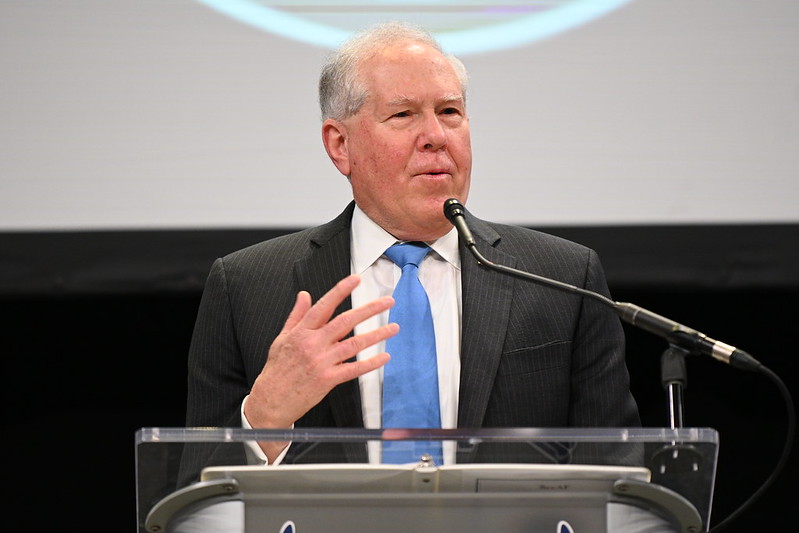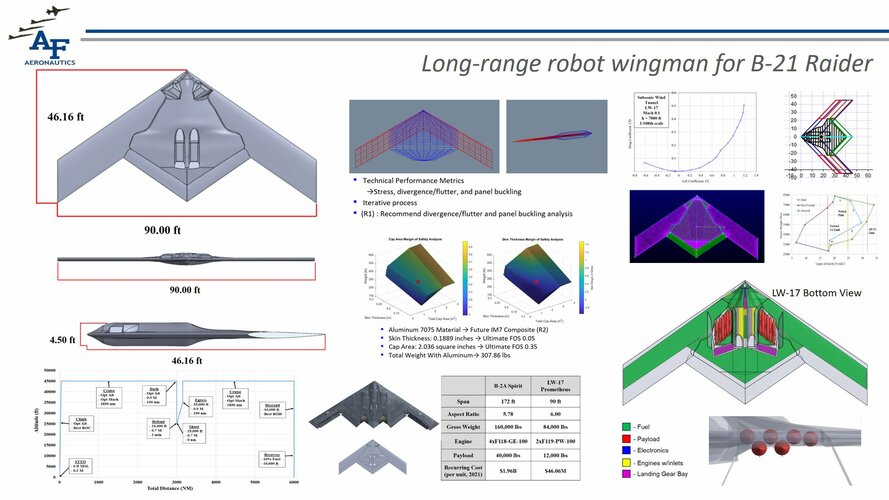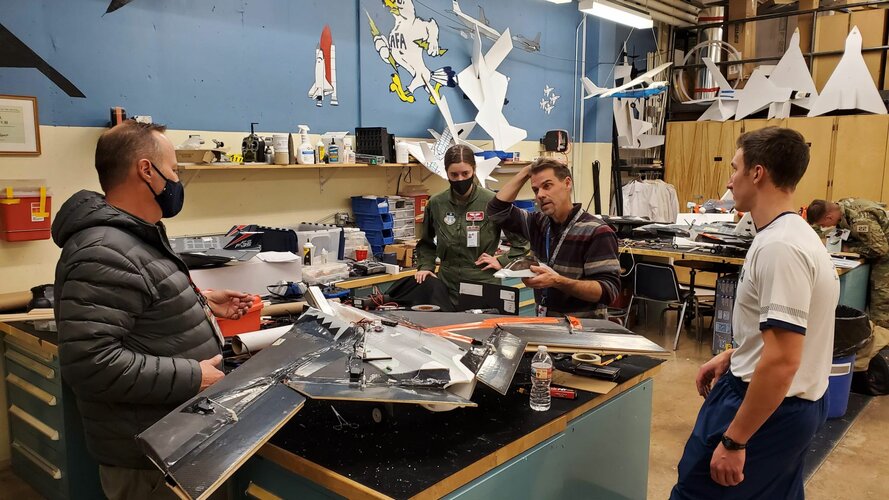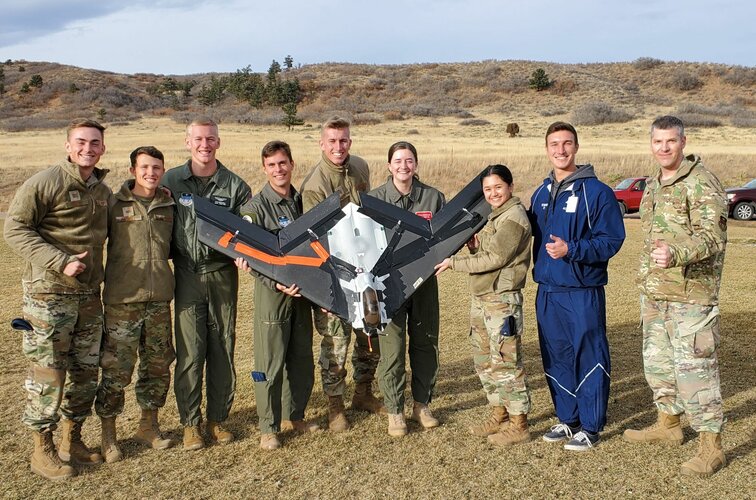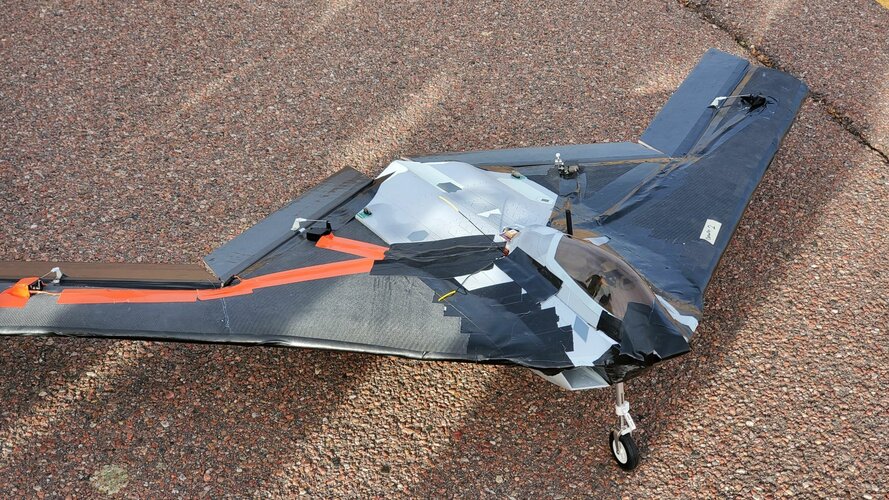U.S. Air Force B-21 and NGAD Programs Spawn Autonomous Shadow Aircraft
March 18, 2022
A new proposal by the U.S. Air Force is transforming the concept of a “Loyal Wingman” for the Northrop Grumman B-21 bomber and future Next-Generation Air Dominance aircraft.
Rather than a small, reusable, autonomous aircraft that is cheap enough to sacrifice on any given mission, two new classified programs set to be proposed in the fiscal 2023 budget may call for new types of long-range uncrewed aircraft systems (UAS) capable of carrying thousands of pounds of munitions, with a price tag higher by an order of magnitude compared to the low-cost, attritable systems shown to date.
A new proposal for the Air Force’s “wingman” UAS concepts for the B-21 and Next-Generation Air Dominance (NGAD) aircraft instead recalls the operational versions that were supposed to follow DARPA’s pioneering Joint Unmanned Combat Air Systems (J-UCAS) program before its termination in 2006. They will be designed to accompany and support crewed B-21s and NGAD fighters but will be powerful weapon systems in their own right, costing up to hundreds of millions of dollars each.
“We’re looking for [uncrewed] systems that cost nominally on the order of at least half as much as the manned systems that we’re talking about for both NGAD and for [the] B-21,” Air Force Secretary Frank Kendall said in remarks at the Air Warfare Symposium on March 3.
Such a cost estimate represents a huge escalation for the Loyal Wingman concept. Since 2016, the Air Force Research Laboratory (AFRL) has demonstrated a series of low-cost attritable aircraft platforms typified by the Kratos XQ-58A Valkyrie, an aircraft with a $3-4 million cost target. In presentations, the AFRL defined the “attritable” term as a UAS costing $2-20 million—a price range high enough to field a reusable system but still cheap enough to sacrifice, depending on the mission need.
The AFRL will continue experimenting with low-cost wingman concepts, but Kendall’s remarks show that the Air Force may seek a more sophisticated approach to the “Loyal Wingman” concept for the B-21 and NGAD. The Air Force launched the B-21 program with an average unit cost target of $550 million, which was readjusted to $511 million based on Northrop’s cheaper, winning bid. But that number is calculated in 2012 dollars. If adjusted for inflation, the current value of the average unit cost target for the B-21 is about $640 million.
A half-price “wingman” for the B-21, therefore, would cost about $320 million, roughly the same as four Lockheed Martin F-35As. The NGAD program has not declared a target for the average unit price of the next crewed fighter, but a December 2018 estimate by the Congressional Budget Office (CBO) forecasts a $300 million price tag. A half-price wingman of the CBO’s NGAD concept would cost about $150 million, a number significantly higher than called for by the AFRL’s version of an attritable Loyal Wingman.
In follow-up remarks after his speech at the symposium, Kendall clarified that the final cost estimate for the two classified uncrewed combat aircraft programs he has proposed remain under debate, with different sides arguing which capabilities on the B-21 or NGAD could be deleted on the uncrewed platforms. But Kendall does not expect the uncrewed aircraft to cost any less than half of a B-21 or NGAD. “The nominal ‘one-half’ is sort of an estimate of what we should shoot to achieve as a minimum at this point. I’d love it to be lower,” Kendall says.
The Air Force’s planned force structure for B-21s and NGADs could be affected by the new revelations about the scope of the two new classified UAS programs. An optimistic scenario might allow the Air Force to use such a large, uncrewed bomber to add to the “more than 100” B-21s in the program of record, with the UAS perhaps helping to achieve Air Force Global Strike Command’s preferred fleet size of about 150 stealth bombers. Alternatively, a pessimistic outlook could jeopardize the Air Force’s plan to buy more than 100 B-21s, as a subset of the mission is diverted to the lower-cost UAS fleet.
In a follow-up interview, Kendall says he remains comfortable with the current number of B-21s in the program of record and that any changes would be speculative.
Lt. Gen. Clinton Hinote, deputy chief of staff for strategy, integration and requirements, says the Air Force is trying to figure out how a part of the long-range strike mission could be performed less expensively by using UAS rather than a B-21.
“We’re asking what our [industry] offerors might be able to do with producing combat capability at a lower price point by using autonomy,” Hinote says. “We don’t know what answers we’re going to get.”
In an interview with Aviation Week, Kendall says the proposal for a half-price, uncrewed wingman for the B-21 may still be dropped based on responses from industry. “I’m quite convinced [as] to the cost-effectiveness of a mix of crewed and uncrewed aircraft for the NGAD family of systems,” he says. “I’m hopeful that we’ll get a similar answer for the longer-range B-21 family, but we want to do the work to make sure that’s true.”
The Air Force needs the future UAS to accompany the B-21 and NGAD for the full length of its mission, Kendall says. In addition to implying a need for broadband stealth features and advanced electronic warfare systems, his remarks point to a need for a large, long-range aircraft. “It has to have range capability to go as far as the crewed system goes and support that system with a reasonable payload when it gets there,” Kendall notes.
Such a UAS may not fit the AFRL’s classic definition of “attritable,” but the term still may apply in other ways. Unlike the AFRL’s $2-$20 million price range for an attritable system, Kendall defined the term only as a function of the lack of a human onboard. In this sense of the attritable term, even a $320 million aircraft can be allowed to take what might be considered a suicidal risk to a human-piloted aircraft during a combat mission.
“They can also be attritable or even sacrificed if doing so confers a major operational advantage—something we would never do with a crewed platform,” Kendall says.
A market survey released to industry in February lists unclassified performance capabilities sought for the B-21’s uncrewed wingman. It calls for an aircraft with subsonic speed and at least 1,500-nm range and a minimum payload of 4,000 lb., along with the ability to operate in a “dense” environment of enemy radars, radio frequency receivers and infrared sensors.
Such characteristics recall the capabilities of the Northrop Grumman X-47B and Boeing X-45C, the DARPA--funded demonstrators for the J-UCAS program more than 15 years ago. Such single-engine aircraft can greatly exceed the cost of stealthy crewed fighters. For example, the average flyaway cost for the unarmed and nonstealthy Boeing MQ-25 carrier--based tanker is about $121 million, or 28% more than a U.S. Navy F-35C ordered in fiscal 2022.
The market survey’s unclassified list of performance capabilities likely understates the Air Force’s preferred performance targets for the new bomber. Mark Gunzinger, director of Future Aerospace Concepts and Capability Assessments for the Mitchell Institute, tells Aviation Week he expects the “B-21 Wingman” requirements to include 3,000-nm range and 10,000-lb. payload capacity.
Notably, Gunzinger, a retired Air Force colonel and bomber pilot, participated in the 2010 study that led to the Long-Range Strike Bomber program, which called for a family of systems including a bomber, uncrewed aircraft systems and new munitions. “I think we are finally seeing some definition of what the rest of the long-range strike family of systems will be,” he says.
As the J-UCAS program was abandoned in 2006, the Air Force briefly discussed plans to launch development of an operational follow-on. Boeing and Northrop, the J-UCAS competitors, publicly discussed options. The designs included an X-45D with a 125-ft. wingspan, 20,000-lb. payload capacity and the ability to carry up to 80 250-lb. bombs. Northrop’s proposed X-47C, meanwhile, was a B-2-size version of the X-47B and also had the capacity to carry a 20,000-lb. weapons load.
